Last updated on October 3rd, 2023.
If you’re a fan of delicate, crumbly, and buttery pastries, then paté sablée is a delightful option that will surely captivate your taste buds. With its origins in French pastry-making, pate a sablée is a sweet short pastry recipe that serves as a versatile base for various desserts.
This post may contain affiliate links, for more information, read our disclosure policy.
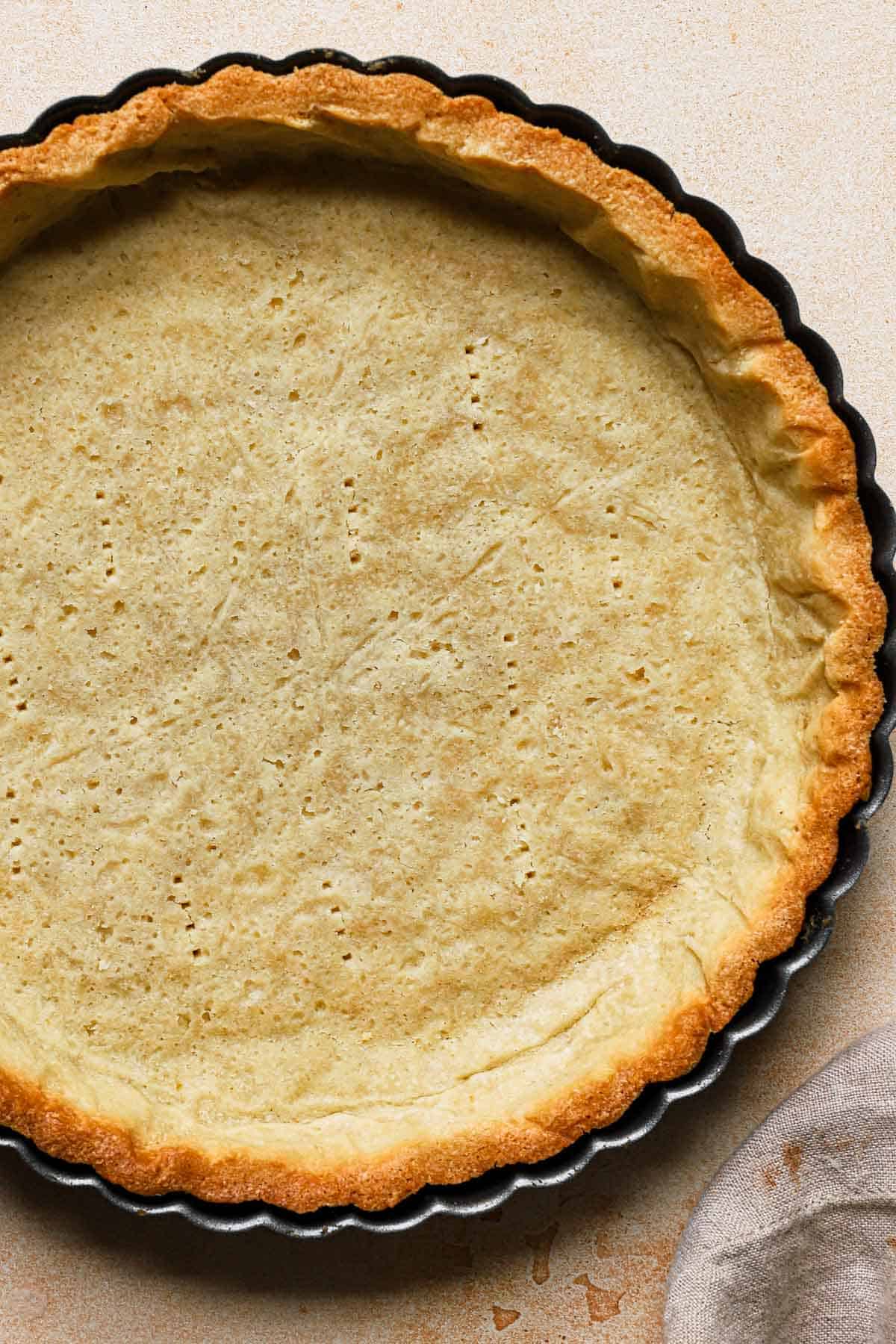
What is Paté Sablée?
Paté sablée, which translates to “sandy dough,” is a classic French pastry known for its crumbly texture and rich, buttery flavor. It is often used as a base for tarts, tartlets, pies, and other sweet pastries. To make the dough, we rub the dry ingredients with the butter then add the egg and other liquids if using.
You may have come across the term Pâte Brisée and Pâte Sucrée, the two are quite different from our pate sablee dough.
Pate brisee is what we all love and know as All Butter flaky pie crust, and it’s great for sweet and savory dishes since it is lacking sugar. And like the American pie crust, it is made by cutting butter with flour and then adding some ice water.
Pate Sucree is kind of like a sweet cookie dough baked as a tart, and it calls for the creaming method (creaming the butter and sugar first).
The sable pastry dough is a rich shortcrust pastry and its firm buttery pastry shell texture makes it a great option for creamy filling such as creme mousseline, creme Chiboust, creme legere, Ganache, Crema Pasticcera, and even Chocolate Whipped Cream. Many times it is used for many sweet tarts recipes like chocolate tart, or fruit tarts layered with pastry cream and topped with fresh fruits, like this Tarte Aux Fraises, and even this classic Italian dessert Tora Della Nonna.
Ingredients
- Bleached all-purpose flour, unbleached flour, or even cake flour will also work well. For gluten-free options, use 1:1 gluten-free flour.
- Powdered sugar, some pastry chefs like to granulated sugar for a more brittle texture. If you do, make sure to replace the egg with one egg yolk plus one tablespoon of ice water.
- salt
- Baking Powder. Just a pinch will contribute to the tender texture of the shell.
- Unsalted butter, cold.
- Large egg, cold and beaten. Use a large room-temperature egg if using powdered sugar, or granulated sugar if using an egg yolk (plus one tablespoon of ice water)
- Vanilla extract
- Optional: Almond flour. Many French pastry chefs add almond flour for extra texture and flavor. To do that, add up to 1/2 cup (55g) of almond flour to the flour and salt and mix well.
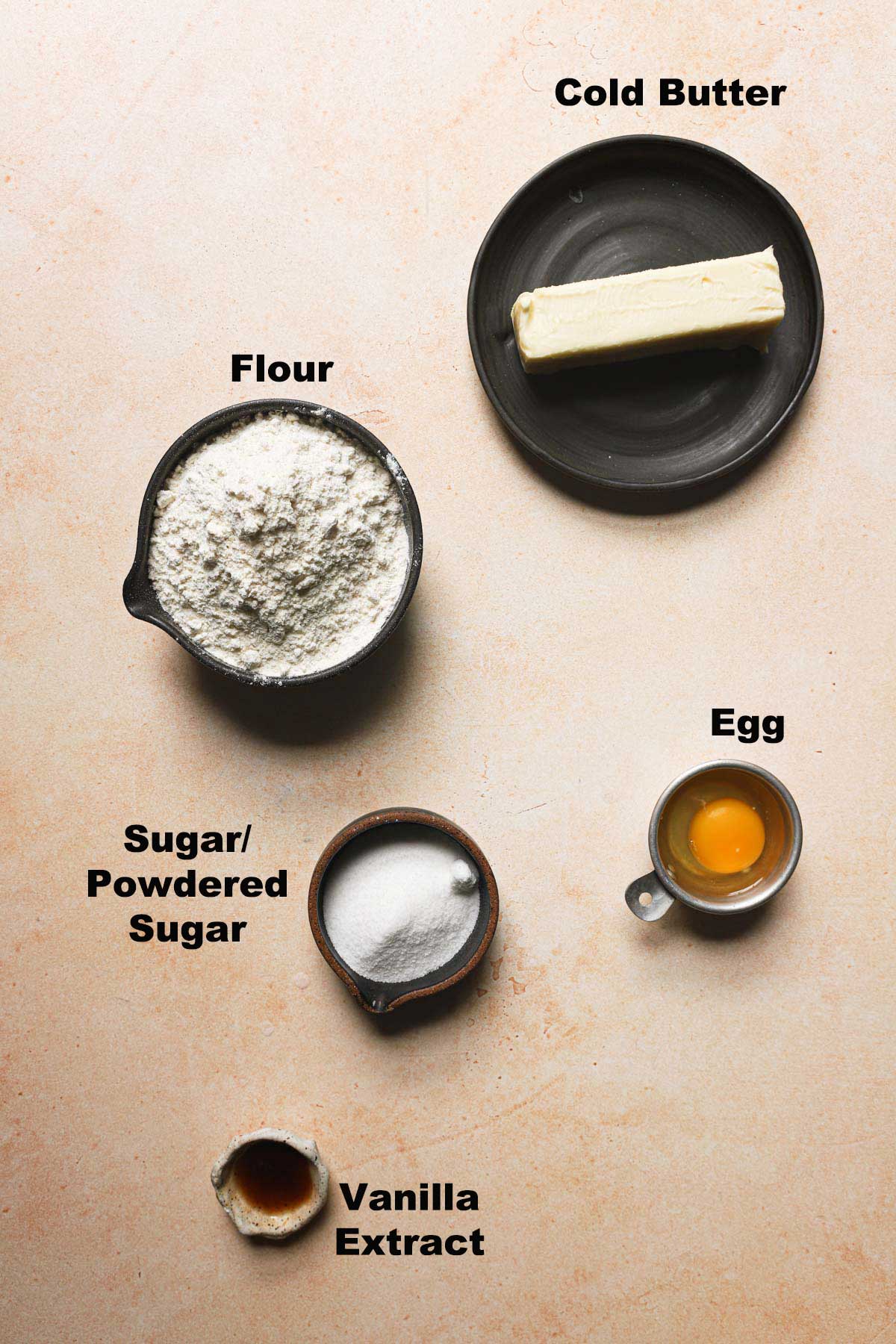
How to Make Paté Sablée
You can make this recipe using a food processor, a stand mixer, or even a bowl and a spoon. I like to use a food processor, but the method is the same if using a stand mixer or a bowl, or a bowl with a pastry cutter.
- Pulse the flour, sugar, baking powder (and almond flour if using), and cold butter until the butter is about the size of peas.
- Add the egg and vanilla extract and process again to blend, until you have a crumbly mixture. This should take about 10 seconds (about 6-8 pulses)
- Line a large piece of plastic wrap over your work surface, then dump the dough at the center of the piece.
- Use the edges of the bag to bring the dough together into a disk shape, then tightly wrap it with it. Refrigerate for a minimum of 90 minutes.
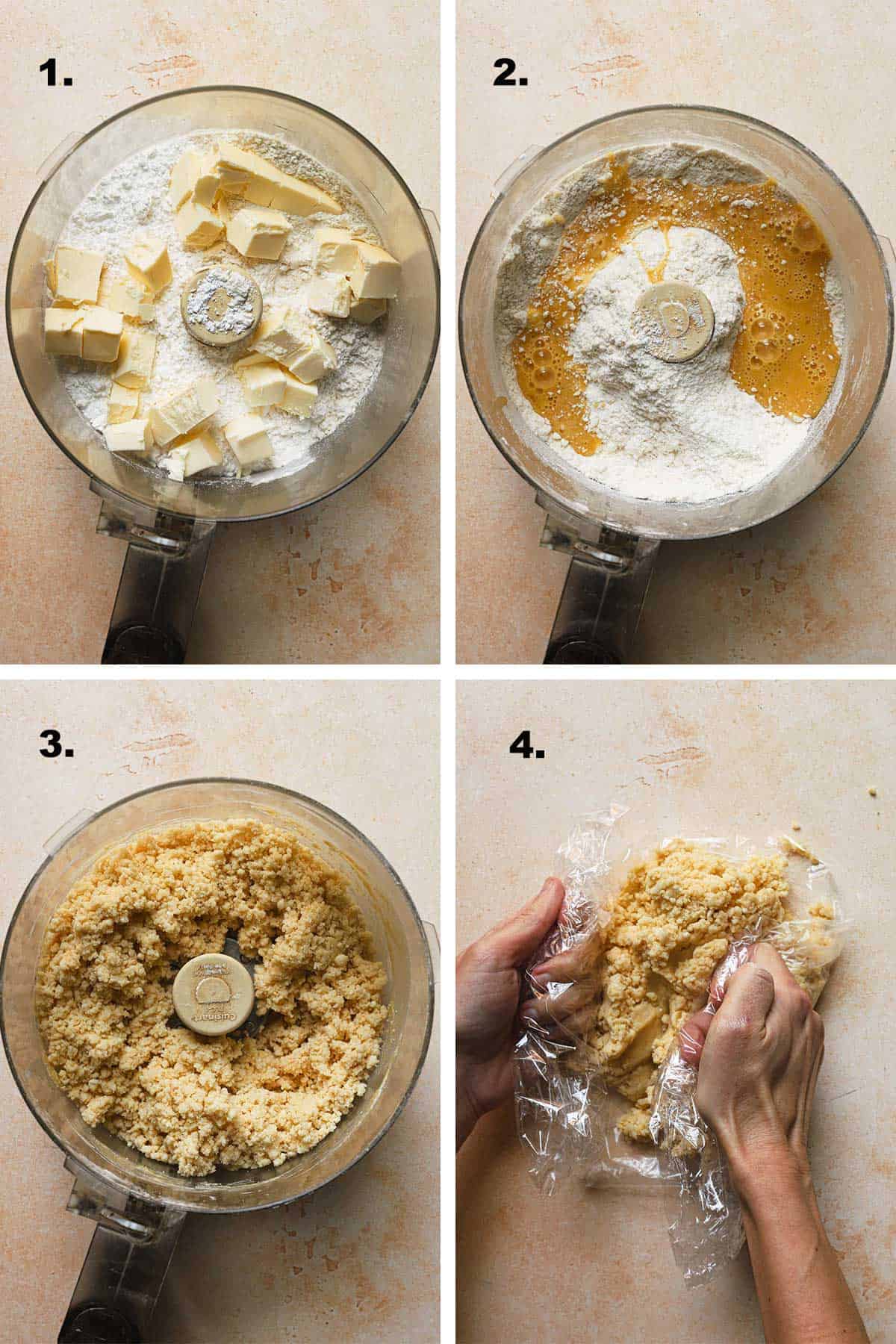
How to Shape and Blind Bake the Crust
Working with sweet shortcrust pastry can be hard and at times frustrating, this is why I like to use two sheets of parchment paper to help me roll, and shape.
- When ready to bake, place the chilled dough between two pieces of parchment paper and roll it to about a 9.5-inch circle.
- Remove the top piece of parchment paper, then gently lift the dough using the bottom piece of parchment paper. Place the dough facing down over an 8-inch tart mold with a removable bottom, then use your fingers to gently press the dough into the mold. Chill the dough for about 20-30 minutes before removing the paper.
- Remove the chilled dough from the refrigerator, and gently peel the parchment paper. Use a fork to prick the dough, and a sharp knife to cut any excess dough hanging from the edges of the tart pan.
- Spray the parchment paper you set aside with some oil spray and place it back over the tart shell, top with pie weights (or dried beans), and bake.
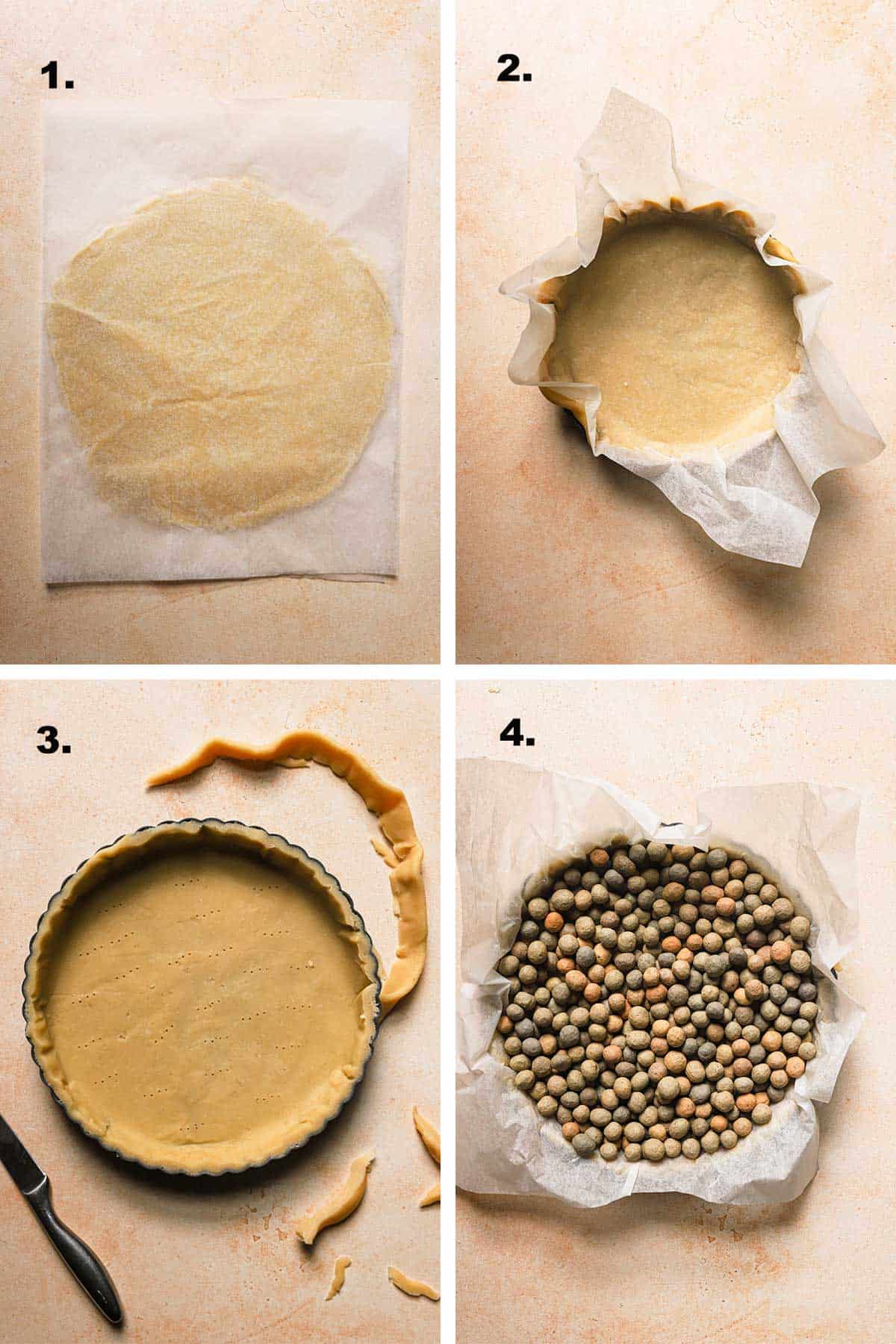
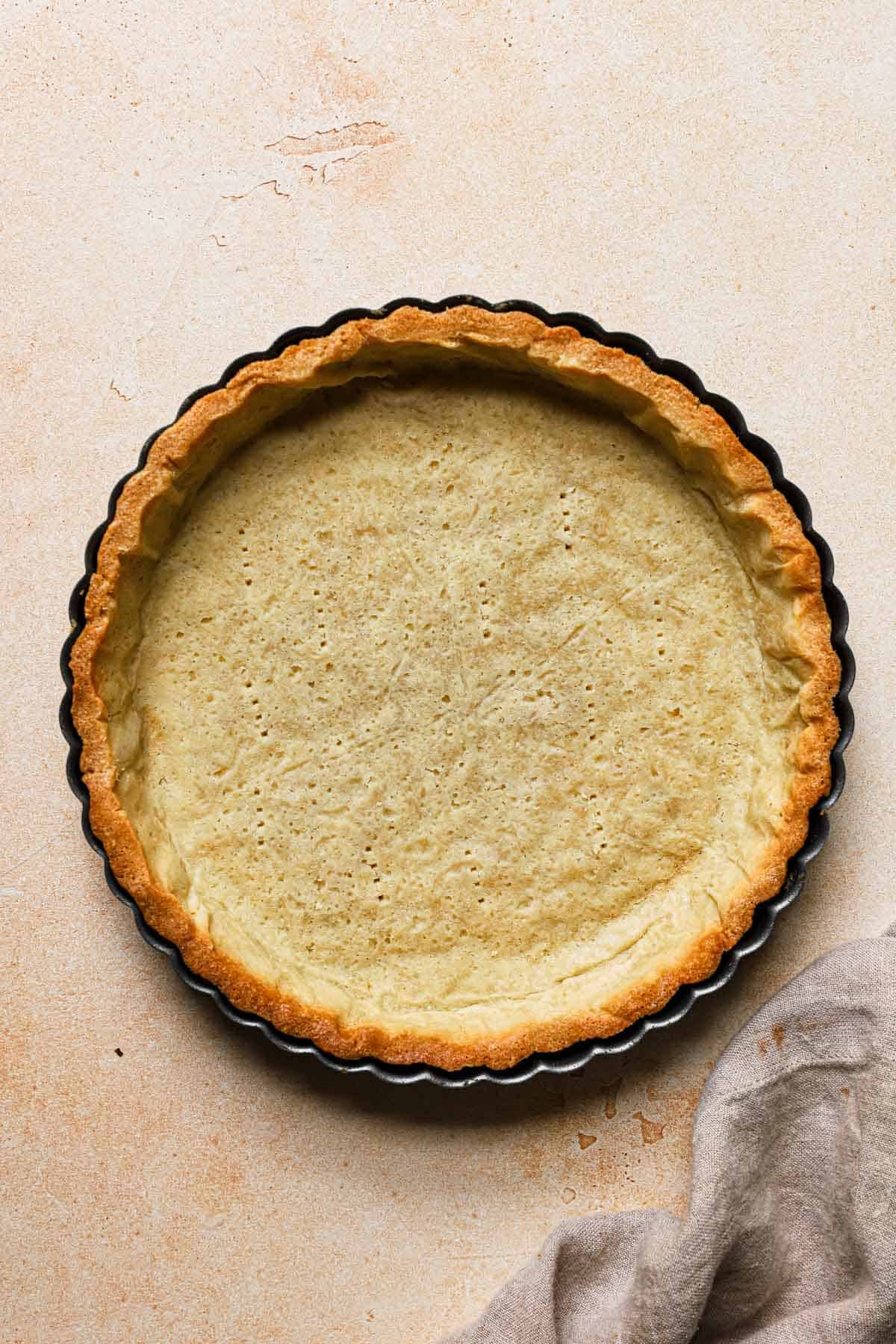
Expert Tips
- Always measure your ingredients using a kitchen scale, this can make or break any recipe.
- Use cold ingredients, especially the butter: Incorporating cold butter into the dough is crucial, as it creates a flaky texture in the final pastry. I like to place the dry ingredients in the freezer for about 30 minutes as well.
- Do not over-mix the dough. Overworking the dough can lead to a tougher texture. Mix until the ingredients are just combined, and avoid excessive kneading or rolling.
- Use the leftover raw dough to seal any cracks before baking.
- If the crust breaks during baking, use some melted white chocolate to seal the cracks. Allow to set before filling.
- Do not remove the pie weight immediately after baking, allow the shell to cool for about 30 minutes.
- Chill the dough thoroughly: Proper chilling allows the butter to firm up, making it easier to handle and preventing shrinkage during baking. If time permits, freeze the dough for about 30 minutes (or more) before baking.
Storing
Once baked, paté sablée can be stored in a pan covered with aluminum foil at room temperature for up to three days. Alternatively, you can freeze the unbaked dough for up to three months. Thaw it in the refrigerator before rolling and baking as needed.
FAQ and Troubleshooting
If your dough is too crumbly, it may be due to insufficient moisture. Try adding a teaspoon of cold water or an extra egg yolk to help bind the dough together.
While you can use salted butter, it is best to stick with unsalted butter to have better control over the overall saltiness of the pastry.
To avoid shrinkage, make sure to thoroughly chill the dough before baking. Additionally, press the dough gently into the pan to eliminate any gaps. And make sure the pie weight reaches the top of the crust with no gaps.
Tartlets are mini tarts baked in mini tart shells or perforated tart rings. This recipe will yield one 8 or 9-inch large tart, or 4-6 tartlets depending on the size of the pans. The dough should be about 1/4″ thick.
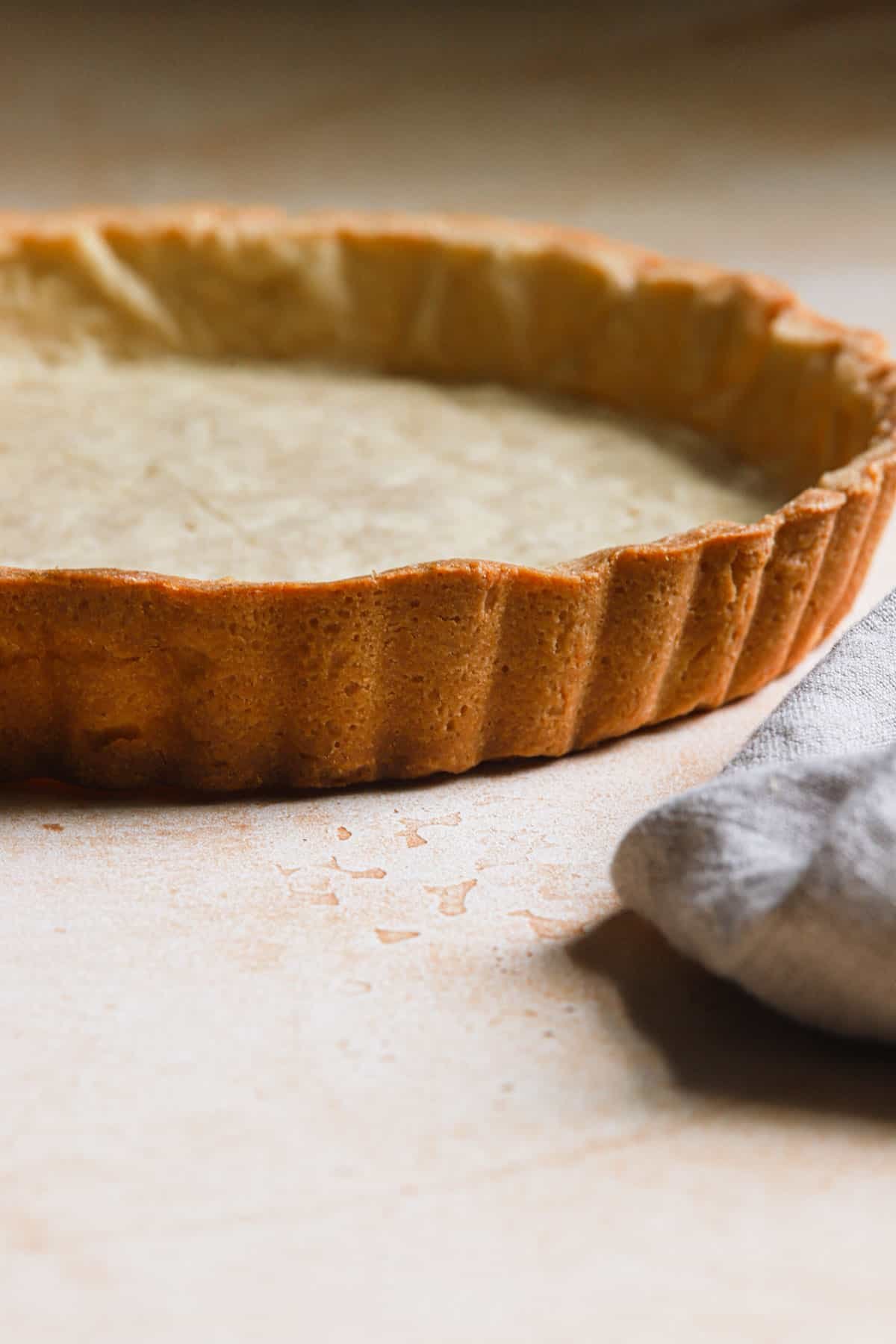
More Recipes you might enjoy
How To Make Creme Patissiere, Cornetti (Italian Croissant),How To Make Choux Patry
Don’t forget to leave a comment and tag me on Instagram when you make one of my recipes.
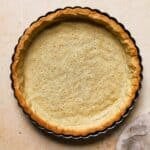
Pâte Sablée
a sweet versatile base shortbread pastry
Ingredients
- 1 2/3 Cup All-purpose bleached flour (200g)
- 1/4 Cup Powdered Sugar (50g)
- 1/4 teaspoon Salt
- 1/8 teapspoon Baking powder
- 1/2 Cup Unsalted butter, cold cut into 1-inch pieces (113g)
- 1 Large Egg, beaten
- 1 teaspoon Vanilla extract
Instructions
-
Place the flour, sugar, salt, and baking powder in a food processor.
-
Add the cold butter and pulse until the butter is the size of peas.
-
Add the egg and vanilla extract and process until you have a moist crumbly dough.
-
Dump the dough over a large piece of plastic wrap and use the edges to press the dough and shape it into a disk.
-
Tightly wrap the disk and refrigerate for a minimum of 90 minutes.
-
Roll the chilled dough between two pieces of parchment paper into a 9.5-inch circle. Remove the top piece and lift the dough using the bottom piece of parchment paper.
-
Gently place the dough over an 8 or 9-inch tart pan and use your fingers to press the dough into the mold.
-
Place the pan with the dough back in the refrigerator to chill for 20 minutes or up to overnight.
-
Preheat oven to 375F (190C), and line a baking sheet over the low oven rack.
-
Remove the parchment paper from the chilled dough, use a fork to prick the dough then a sharp knife to cut any access dough.
-
Line a piece of parchment paper over the dough and fill it with pie weights or dry beans.
-
Bake for 30 minutes. Remove from the oven and allow to cool for about 30 minutes before removing the weights.
Recipe Notes
- Always make sure to weigh your ingredients using a kitchen scale for best results.
- Remember to use cold ingredients, especially butter. Cold butter is key to getting that tender texture in your pastry. I usually place the dry ingredients in the freezer for about 30 minutes as well.
- Be careful not to overmix the dough. If you work it too much, you’ll end up with a tougher texture. Just mix until everything’s combined, and don’t go crazy with kneading or rolling.
- Use have any leftover raw dough, use it to patch up any cracks before baking.
- In case the crust breaks while it’s baking, you can fix it up with some melted white chocolate. Just let it cool and set before filling.
- Remember not to remove the pie weight right away after baking. Give the shell about 30 minutes to cool down. This will help from shrinking.
- Make sure to chill the dough properly. When it’s nice and cold, the butter firms up, making it easier to work with and keeping it from shrinking during baking. If you have the time, pop the dough in the freezer for around 30 minutes or even longer before baking.


Hi Dee, thanks for the detailed recipe! If I want it to be less sweet could I leave out the sugar and add the almond flour instead? Thank you!
You can do both but the almond flour is not a good replacement for the sugar. The sugar adds sweetness and also provides a tender texture. Without the sugar the dough might be too dry, if that happens add 1-2 teaspoons of heavy cream, or milk.